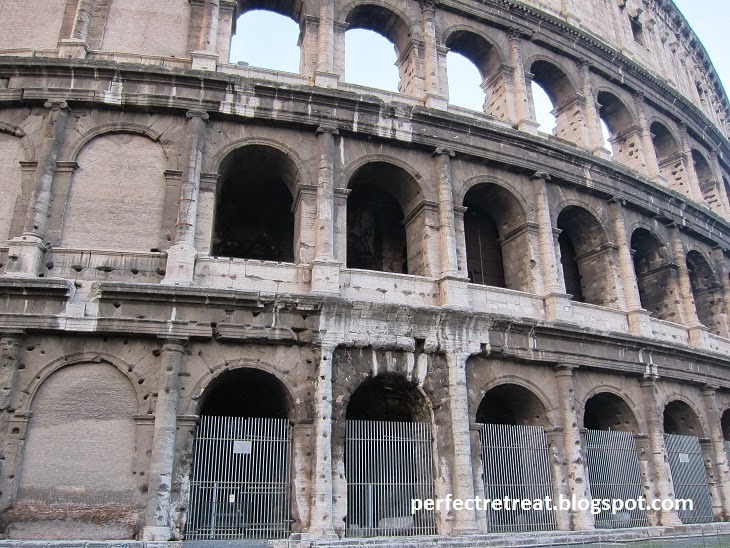Rome was our playground for the next three days. We made our way in Rome on foot most of the time and it was extremely fun. Sometimes visiting a place once was never enough so we went back just in case we missed something interesting.
Photo taken from: http://travel.yaia.com/rome/maps.html
We signed up for a guided tour of the Colosseum and the Palatino before we set to Italy because this was one way we could learn more about the history of the Romans.
Here's the majestic image of the Colosseum. In the past, the Colosseum was known as 'The Flavian Amphitheater' and it was the largest amphitheater in the Roman city. It could house 50,000 spectators at one time, which was truly an extraordinary feat I must say.
The Colosseum is elliptical in shape and its height is over 160 feet high. However, the top part of the building which formed the other half of the ellipse had collapsed, after several earthquakes occurred in Rome. We could see the parts that had fallen near the walls.
There were so many other negative elements that threaten the Colosseum each day but the structure is still standing after 20 long centuries. The Colosseum is indeed one solid building made from concrete, stone, volcanic rock and bricks. To me, it's also a living proof that the architects in that period were brilliant and way ahead of their time.
Having 4 main floors in total, each floor had 80 archways and multiple sets of stairs. This made movement in and out of the Colosseum very easy and smooth. I marveled at the exterior of the Colosseum but its interior was a different story. It saddens me because I could see more clearly that the building is decaying and time is of the essence if we want to save the Colosseum. I was somehow relieved when the tour guide said that the restoration of the building is already underway.
I walked around the winding corridors of the Colosseum and imagined myself walking with the Romans. For a moment, I wondered whether the Romans were tall and big as the walls surrounding the arena was very high. Later, I was told that the walls was built that way to prevent both wild animals and gladiators from lunging into the spectator area.
The seats in the amphitheater were arranged according to social status. The third floor was designated for slaves and women since it was the furthest from the arena. The second floor was for the common people (the plebeins). And the first floor was for the emperors, nobles, senators, vestal virgins, and Rome's rich citizens (the patricians). The seating arrangement was quite clear cut but in the eyes of the Romans, women were seen to be in the same status as slaves? So women were slaves to men? Hmmm...
We had the opportunity to go down to the ground floor of the Colosseum. This was directly underneath the arena and this area was not opened to the public unless you happened to have a special pass, which our tour guide had.
While on the ground floor, I could see that additional support had been installed to strengthen the Colosseum. The management had also tried to simulate a small part of the arena as the original arena had rotted and disappeared.

Before, the arena used to cover the ground floor of the Colosseum. Now that it was stripped off, we could see the underground tunnels and the rooms that housed both the gladiators and wild animals from the first floor.
The guide told us that the ground floor was equipped with pulleys, ramps and transported elevator so that both gladiators and wild animals could be brought up to the arena. I was equally amazed that there was also a stream underneath the Colosseum! This stream supplied water to the gladiators and the caged animals at that time.
The artifact in the Colosseum shown here illustrate that the game is not only between gladiator and gladiator. Sometimes, a gladiator would be forced to fight with wild beasts. Most of the time, the game would end with the winner slaughtering its opponent. The lives of these gladiators were of no value to the Romans simply because the gladiators themselves were slaves, prisoners of war and condemned criminals.
As much as I admired the Colosseum, I still don't understand why the early Romans were desensitized to violence and killings. I've no answer for this but the Colosseum is still a place that you can't miss if you go to Italy.








No comments:
Post a Comment